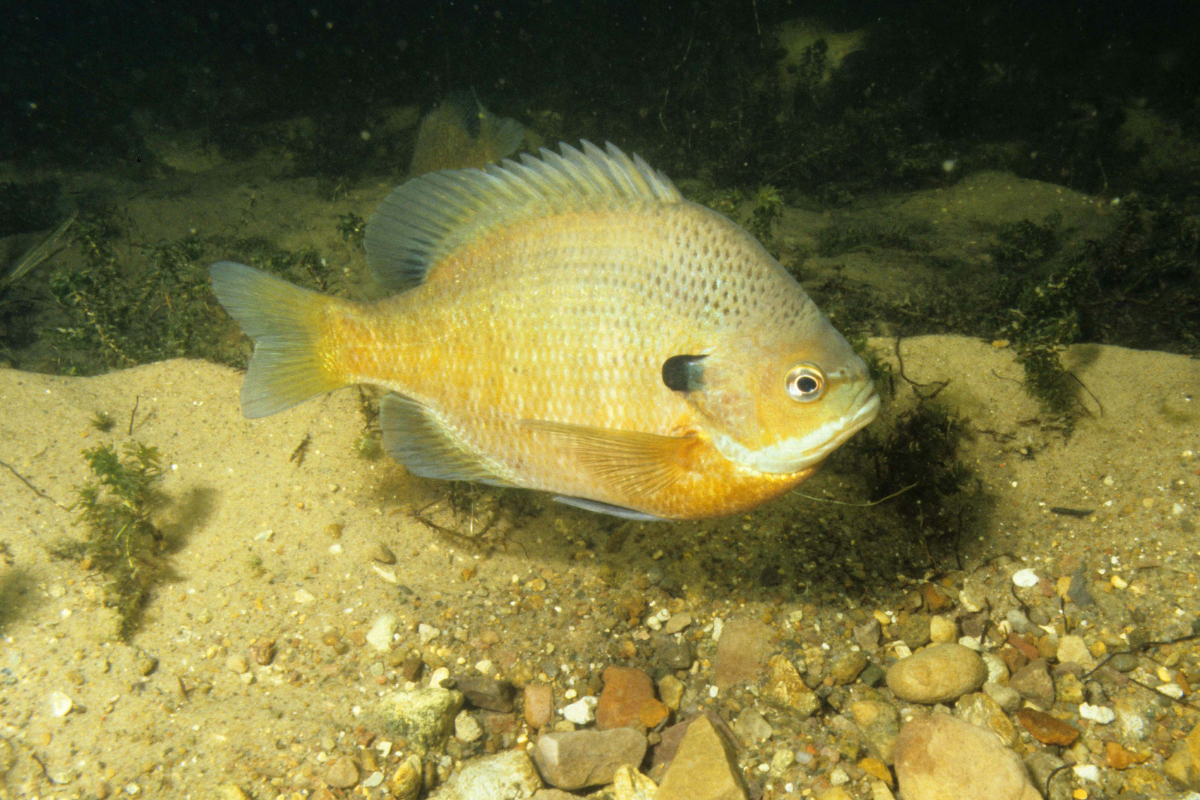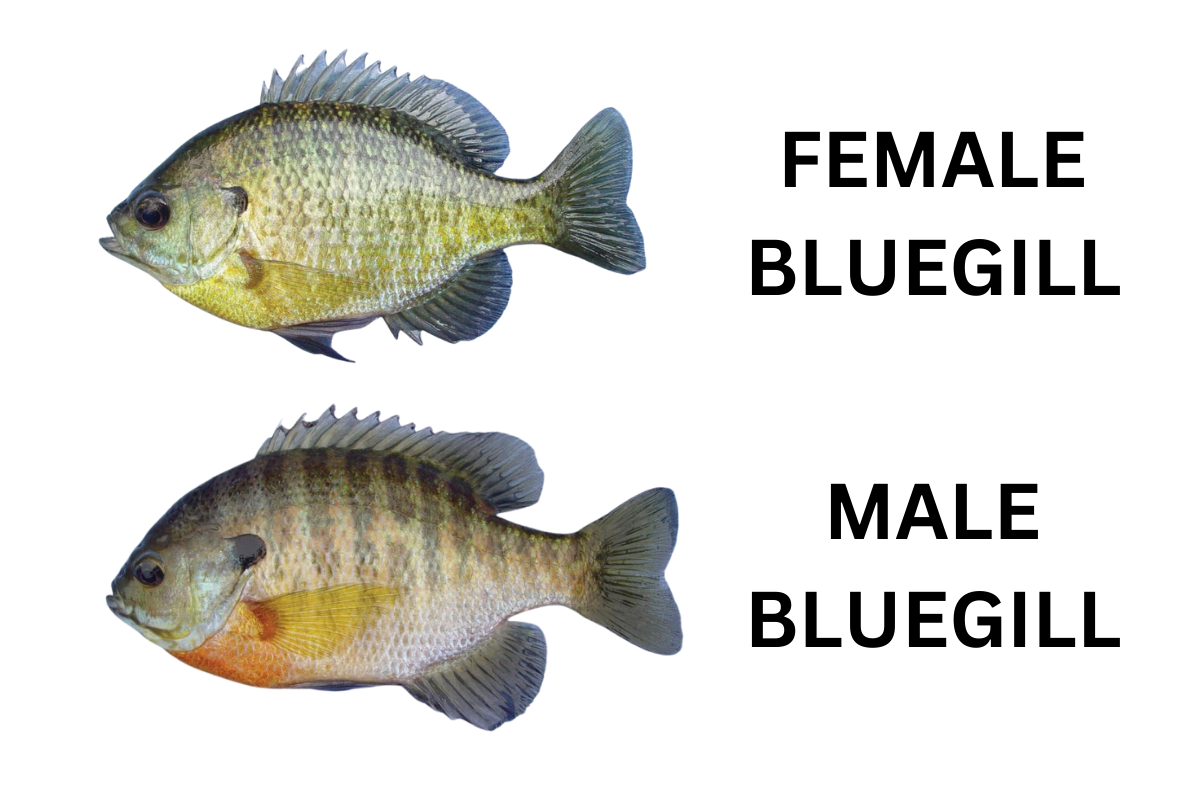Male Bluegills and Parental Care
Our previous blog discussed bluegill management strategies to maintain healthy populations over the long-term. These include using a fish feeder, maintaining healthy plankton populations through fertilization, and introducing some type of natural or artificial selection on the population. In this blog we’ll dig deeper into the artificial selection part of the equation and explain why large male bluegills are so important.
In largemouth bass the mature female fish are larger than the males. If you catch a 5-6 lb largemouth bass, it’s likely a female. But that’s not the case with bluegill. Mature male bluegills are larger than the females. This is due to the parental care and nest guarding behavior of large male bluegills.
When the bluegill spawning season commences, male bluegill select nesting sites in the pond bottom. These nesting sites are usually found in 1-3 ft. of water and are easy to spot in ponds with high water visibility. The nesting sites are created as the male bluegill fans the pond sediment to create an oval-shaped depression that is usually 7-15″ in diameter.

Nest Guarding by Dominant Male Bluegills
After the nesting site is created, female bluegill will lay eggs in the nest and those eggs will be quickly fertilized by the male. The nesting sites are guarded by large, dominant male bluegill before, during, and after fertilization. You’ll find the largest male bluegills near the center of the nest and the smaller male bluegills on the outskirts of the nest. The larger the male, the more dominant he will be.
After fertilization has occurred, the dominant male bluegill will guard the nest for approximately 10 days to ensure the highest possible survival rate for his offspring. During this time, the male will use its fins to fan the sediment off the eggs and oxygenate the water around the eggs. He’ll also charge and fight off any predators that try to enter the nesting area.
As you can see, dominant male bluegills are essential to the reproduction and persistence of a bluegill population. Larger male bluegills can better defend their nesting sites and ensure a higher offspring survival rate. As a result, those large male bluegill genetics continue to persist in the population and you’ll have a strong, healthy bluegill population in your pond.

Identifying Female vs. Male Bluegills
We can use this information about dominant male bluegills to develop proper catch and release strategies for a pond. When fishing for a meal, keep the female bluegill and the smaller males for your fish fry. Release the male bluegill that are 9″ or longer and keep the ones that are less than 9″. This will keep the dominant male genetics thriving your bluegill populations and ensure you have a healthy bluegill population going forward.
All that sounds good and great, but how do you distinguish a male bluegill from a female bluegill? It’s not difficult, although it’s not as clear as some other species in the animal kingdom. Male bluegill will have larger and longer ear tabs. Male bluegill also are darker and tend to have a dark orange belly during spawning season.
This might not be easy to do if you’re just looking at one individual fish. But if you have a live well full of bluegill, you should easily be able to tell which ones are males and females just by looking at the ear tab and the color of the fish. The blue ear tab will be much more pronounced on the males. Do your pond a favor and put those big males back in the water!
Let Up Help Improve Your Pond!
If you’re in the south GA or north FL areas, we’ll be glad to help with your new pond or an existing pond that is struggling to maintain healthy fish populations. Just complete this form and we’ll contact you to schedule a time to meet. We look forward to turning your pond into a productive fishery for years to come!

